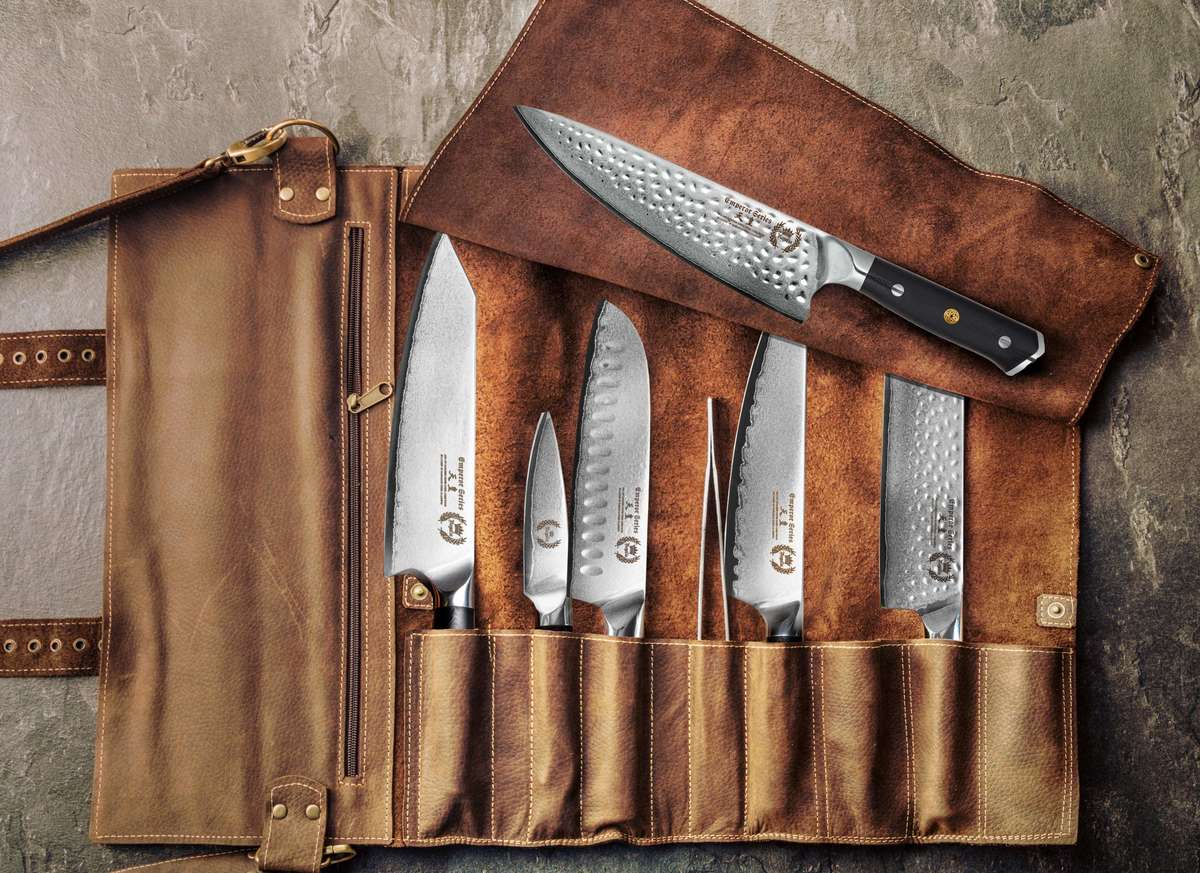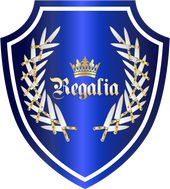Worthy Of Respect
As with the tools of the trade for any precise craft or science, Regalia knives are professional kitchen tools to be treated with regard and admiration. Although, exceptionally sturdy with a military grade G-10 Garolite handle, 67 layers of high-carbon stainless steel cladding, a AUS-10V “super steel” core, full-tang with triplet rivets, and cryogenically tempered for ultimate durability, taking proper care of your knife will ensure that your knife will reciprocate with loyal and faithful service for many years to come.

Like with any high performance professional kitchen knife, certain treatment is advised :
- Hand washing with minimal amounts of soap is advised.
- Dry with an absorbent towel or cloth immediately after washing.
- Do not machine wash. Violent forces and course detergents in the dishwasher can cause damage.
- Avoid soaps with citrus or bleach which can promote corrosion.
- Do not leave knife wet or submerged in water. Even stainless steel is “stain- LESS”, not stain-proof.
- Use a wooden or plastic cutting board. Even though our Emperor Series is as sturdy as they come, the hardness level of this blade makes it slightly more prone to chipping than a softer steel. Therefore, it’s recommended not to cut on glass, stone, or other hard surfaces.
- Other than a cleaver designed for this purpose, do not use knives to cut through bone.
- Do not try to separate frozen hamburger patties or pry other frozen foods apart with the blade.
- Do not use this knife as a screwdriver or can opener.
- Protect the edge of the blade when not in use.
Honing & Sharpening your Regalia™ Knives
The Emperor Series is engineered with super premium AUS-10V Japanese steel with an incredible rockwell hardness scale level of 62+. That’s seriously hard steel! Additionally, this blade was hand finished using the traditional 3-step Japanese Honbazuke Method to ensure razor sharpness. As such, this blade will hold its edge for longer than most any other knife. It isn’t recommended to hone this blade too often but if necessary, it is advised to use a medium-fine ceramic honing rod that is around a #1200 grit, and follow the following instructions.
- With the tip of the honing rod facing downward and resting on a flat and stable surface at a comfortable height in relation to your body, hold the handle securely with your non-dominant hand.
- Hold the knife in your dominant hand, with the sharp edge of the blade touching the honing rod.
- Ideally, one should hold the blade at a 22.5-degree angle to the honing rod. To get this angle, first hold the knife at a 90-degree angle (horizontally). Then, rotate the knife so that it halves that imaginary 90-degree angle to 45-degrees. Rotate once more to half that and you are at 22.5 degrees.
4. Start with the heel of the knife, and draw the blade downward along the rod toward the counter, maintaining light pressure. Be sure to pull the handle back toward you, so that you make contact with the entire length of the blade's edge.
5. Repeat on alternating sides until desired edge is attained.
Sharpening serrated knives.
For sharpening serrated knives such as our Regalia™ Emperor Series Bread knife, a sharpening rod is required. This should indeed be a rare occurrence if it is EVER necessary at all. If it is ever needed, you should choose as sharpening rod with a diameter that matches the serrations of your knife. For the Regalia™ Imperator Series bread knife, choose a sharpening rod which is between 8-13mm in diameter.
- Lay the sharpening rod in the serrations and tooth by tooth, move the rod back and forth in an even manner.
- Make sure you hit the full length of the serration. You may have to hold the sharpening rod slightly at an angle.
A great safe way to achieve a perfect and even sharpness is to lay the knife flat on the end of a table with the serrated edge slightly over the edge of the table and move the sharpening rod back and forth over each serration.

